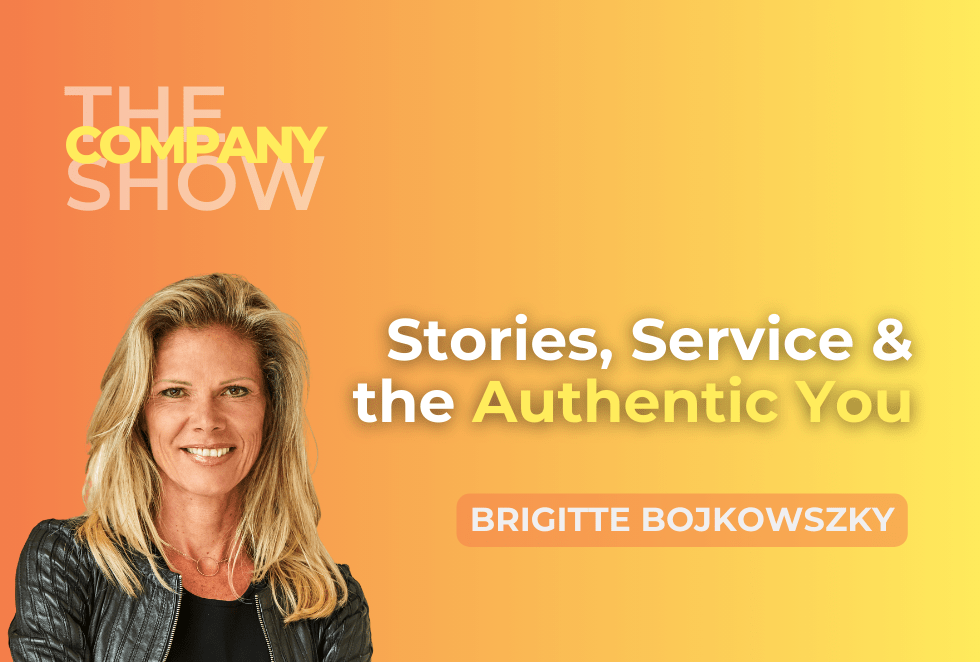I often say that there are two types of people in the world—those who have done frontline customer service, and those that haven’t.
If you want to see the difference between the two, go out for brunch on Mother’s day. It will quickly become obvious to you which of your fellow diners have done their time in the customer service trenches.
Aside from understanding in the very marrow of your bones how much harder service workers actually work than your average CEO (I’ve been both, it’s 100% true and I’ll die on that hill)—there is something you learn as a frontline worker, something that can make a huge difference to you as a business owner.
It’s the actual, functional delivery of the company’s brand.
Servers, to use the example I am most familiar with, tend to have a better understanding of how a brand is perceived by the actual buying public than anyone in the C suite.
This, of course, can be for good or ill depending on how well customer service is managed, and how integrated their feedback is in the managerial and marketing processes of the business.
That integration is all about taking the intangible—feelings, impressions, offhand comments, and codifying it into a real part of the brand that can be used in all outward facing communications, on your website, in your emails, and on your podcast.
Today, I’m speaking with Brigitte Bojkowszky, the creator of Bridget Brands, who is a company and personal brand identity strategist with over 23 years of experience in teaching global marketing management and branding at universities worldwide.
Brigitte and I are talking about what differentiates a company brand from a personal one, when you should use each, and how they relate to each other, and the importance of storytelling in all of your branding activities—including your podcast.
Listen to the episode below or continue reading the blog post!
Tune in to the full episode to learn about:
- The story of Bridget Brands
- The intersection of personal and company branding
- Storytelling and brand Connection
- Efficiency and authenticity in AI usage
- Branding in company onboarding and operations
- Metrics and indicators of effective branding
- Brigitte’s podcast picks for mastering brand authenticity
Don’t forget to join us for our free monthly strategy calls on the third Thursday of every month!
The Story of Bridget Brands
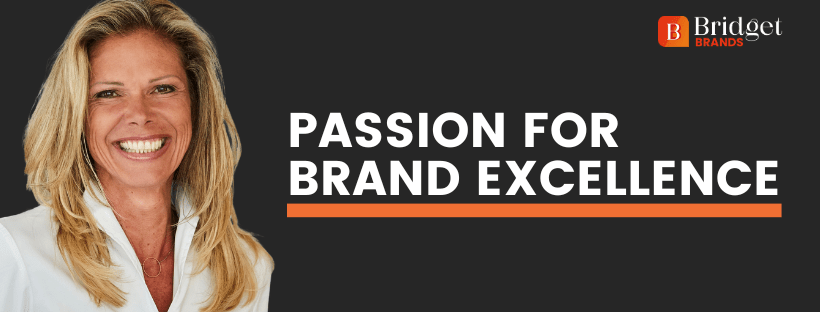
Brigitte: “I’m a company and personal brand identity strategist, the founder of Bridget Brands, that’s the name of my company, and I’m based in Austria and I work globally.
My mission is to empower organizations, small and medium enterprises, but also corporations and entrepreneurs, those who are embarking, like corporates who are embarking on their entrepreneurial journey or newly minted entrepreneurs.
I help them who struggle with their branding strategies to help them to transform their passion and desires and ambitions, to transform them into resistible, captivating brands that shine with authenticity and with brilliance. That’s what I’m doing.”
The Beginnings a Customer-Focused Mindset
Brigitte: “I started out as a flight attendant where I was taught this passion for excellence. So there is this passion coming for brand excellence. So I started out as a flight attendant and I flew for around five, six years and I traveled throughout the world. I got to know many cultures, mentalities.
I was on five different continents in a month. It was just great. I was flying, mostly long haul. So it was a really great experience, also to learn how to host people on board in business class, first class.
This was something that was really interesting and exciting and to really immerse with the customer because you really need to read from their eyes what they want. You’re already anticipating, you learn to host and I think this is something that you need as a coach.
You need to read people or need to at least anticipate what’s going on because you need to know where they are, so you can guide them from where they are to the goals that they want to achieve.”
Megan: “I think that that’s such an interesting point and especially about working with customers at that frontline level. I think there’s two kinds of people in the world—it’s people who have done that kind of frontline work with customers and people who haven’t.
The people who have always have so much more insight into branding and marketing and company culture because they know they’ve seen it in action in a way that someone who’s never done that kind of work just doesn’t.”
Brigitte: “You are very close. You are the closest to the customer than anyone else. It’s the flight attendant on the plane. It’s the barista. It’s the waitress in a restaurant. It’s everywhere where you do service to your customer and you as a person are involved.”
On the Way to Entrepreneurship
Brigitte: “As you say, frontline. You learn so much, and for me it was like when I flew across the globe, I was exposed to so many different cultures.
That was also one takeaway as a teaching professor later on, teaching on a global level because I knew how to approach a Japanese person, a person from India, a person from Thailand, a person from Mexico, South America, different countries in Africa, from Northern America.
Everyone has its unique mentality, culture, and way of doing things, so you need to get this understanding, this cross-cultural understanding, and that’s where I got it from.
I stopped flying, I was around 25, I couldn’t have done it anyway much longer until 32 at the beginning because then the contract terminated, we were getting too old. So it was 30 years ago, that was the case when you flew for an airline. So I thought I need to have a second plan, a backup plan.
So I stopped and jumped ship and started studying. I was a student, very fresh, going to university, what’s going on there? I studied business education, I’m a certified teacher and also international marketing and management and that’s where my my core is basically.
I combined both and so I got the tools, the techniques, the skills of first of all becoming a coach, being a teacher, being a guide, but also the knowledge of international marketing and management and branding.
I really studied it. It was not just one course, I studied it. So I also did my PhD at the end of the day in international marketing and management. I taught for 23 years at university in that area, global consumer behavior, global brand management and everything concerning brands and branding and strategy and consumers and marketing but I also was in corporate—so everything is coming together like a puzzle.”
Breaking Free to Build Brands
Brigitte: “Then I decided, now let’s become an entrepreneur. I mean it was not just one point in time decision, so now I’m switching. There was a lot going on for me, also molding myself into traditions that my unique self was not really aligned with.
I was always this person who was looking for freedom and deciding on my own and by myself what I want to do and when I want to do it and with whom I want to work. Because I was very often put into a box and I had difficulties to breathe because I cannot live my true authenticity. I cannot do it my way. I had to switch.
It’s like a lever that you switch from one side to the next, from one extreme to the other extreme to finding my balance. It’s the most liberating thing I’ve ever done starting my entrepreneurial journey in the area of branding, of developing strategies for people and organizations but more so creating these brand identities, because that’s what it is all about and educating the market about what this really is.
It’s not just a logo or a color or a name. There is so much more because it’s all about what kind of meaning, what do you want to communicate? What do you stand for as a brand? What should last of all, people feel about you, when they interact with you, when they talk about you, when they think of you?
It’s not just what people talk about you when you’re not in the room. It’s really about the feeling that they have.”
Early Career Inspirations
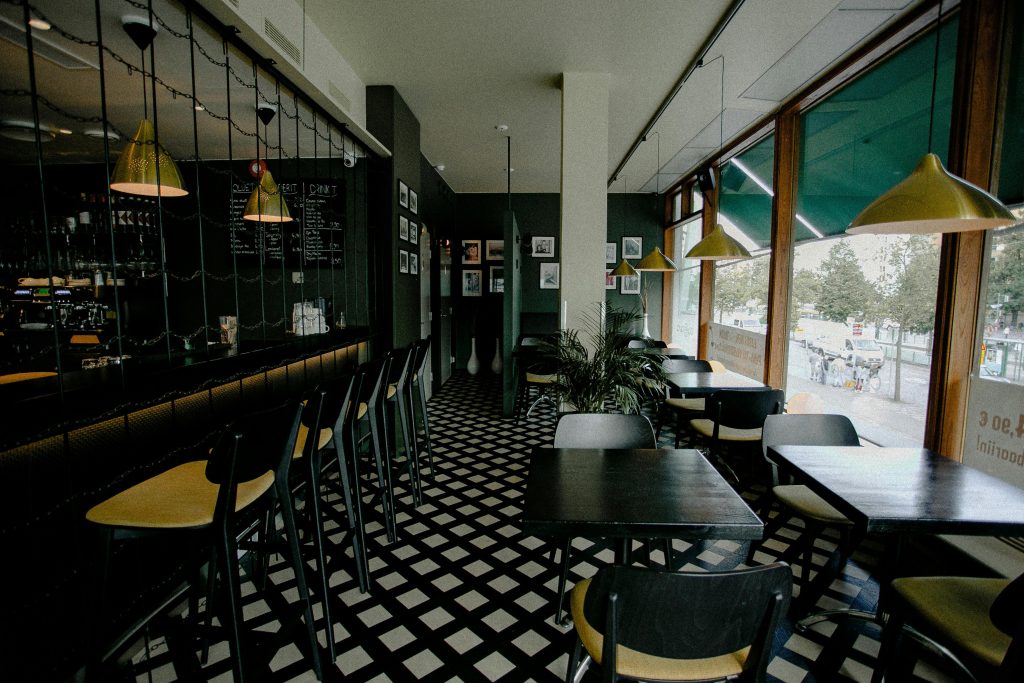
Megan: “I think it’s so interesting how you’ve got these threads that have been kind of through lines throughout your career and it’s really making me think, I remember back when I was young, one of my first jobs was working at a fast food restaurant.
I remember being so frustrated with how things were managed. I was so frustrated, I started keeping a notebook of everything that I would do differently when I was in charge. Really, that carried through, through the rest of high school, into college, the little college I did, and then into starting to work for startups and running my own companies.
Those initial values that you kind of formulate when you’re a young person really often can carry you through for the rest of your career. It’s very interesting how that happens.”
Brigitte: “Absolutely. I totally agree with that. I’m coming from a design perspective. I’m also a design thinker or design thinking facilitator.
So how can I improve? How can I make this even better than it is? Because everything can be improved. There’s always room for improvement. Nothing is perfect.
We should not strive for perfection, which is different to excellence, because excellence means you’re giving your best every day.”
Megan: “Oh, what an excellent differentiation.”
Brigitte: “I also remember, I was the one who was writing the workbooks and summarizing different books for a course because I always needed structure. If there was something floating in the air and it’s intangible, I am the person who makes intangibility, tangible.
For me it was like I need to bring this together and make something out of it so that other people can use that as a facilitating device to make sense of things. When we talk about visual branding like logo and everything, I take the intangible, what you want people to feel about you as a brand, and put it into the visual elements that make an identity.”
The Intersection of Personal and Company Brands
Megan: “Let’s start digging into that a little bit because a lot of people listening to this, they run companies. They’ve got a brand and it’s usually where somebody worked with a designer, they’ve worked with a consultant and they’ve got a good company brand.
They’ve got that logo, they’ve got the website, they’ve got cohesiveness but I know one of the things that you’re really passionate about is the idea of a personal brand.
I’d love if you could just speak for a minute or two about the difference between a personal brand and a company brand and where they should intersect and where they should be different.”
Brigitte: “For me, branding starts with mindset. It’s nice to have a logo and everything in place, that’s where a lot of people start out, but you need to give meaning to it. What does it really mean?
There needs to be a story to everything. Especially as a solopreneur, when you start out with whatever that is, and you are the person who is actually producing that service, then you as a personal brand is at the forefront.
You need to know who you are, you need to be in the mindset of a business owner first, with a vision, mission and values and also understand what your limiting beliefs are, to really come to shine as a person, to actually give yourself the permission to do that, because a lot of people are holding back. That’s a crucial thing.
Personal branding is all about who you are as a person and what your strengths are and what you as a person want to become, and this is going to be part of your business brand. So there is this difference between business and personal brand and the difference, two different entities basically, but they come together.
They are interconnected where the essence of one of these brands deeply influences the other. Building a personal brand identity takes precedence for an entrepreneur, because it serves the foundation and shapes the identity of the business brand.
The personal brand acts as a guiding force, it’s influencing every decision and communication that is associated with the business brand. So there is this intentional alignment that assures that values, ethos and the passion of the individual entrepreneur are authentically reflected in the business brand, in the business brand’s identity.
Because the narrative of the company or business brand, however you want to call it, often extends from the entrepreneur’s personal journey. It’s their experiences, their aspirations and it’s not just embodying the professional endeavors or ventures, but the essence of the individual.
For me, my personal journey, what happened to me as a child, what happened to me in my first employments. There is very often pain coming along with it that you as an entrepreneur then transform into your purpose. That’s why personal journey is so important.”
Integrating Personal Branding with Established Company Brands

Megan: “What would you say to someone who has, say, invested a lot in a company or a corporate brand, but they’ve never really done any work around personal branding?
Now they’ve got a company brand that exists and it’s one thing, but they haven’t done that work for kind of their own personal brand.
I may or may not be talking about myself here. So I’d love your thoughts on that.”
Brigitte: “The question here now is how successful is the business? There’s a lot of people that intuitively are doing the right things.
The other people are just lucky at the beginning, but the question is, is it sustainable? Only something that has meaning and has purpose is sustainable.
So how do you as a person relate to your business? How does that go into your business? I don’t know when you talk about company, is it like a one-woman show, one-man show? Is it like a micro company? Is it a small-medium enterprise?
But a company needs to also, like an individual, embrace a vision that everyone is living by and striving for, has mission statement in place. How are we going to achieve our vision? What are the values that we live by and breathe every day so that the company is healthy? Only a healthy company can strive and shine to the outside.
The leader is usually the head of the company and the leader’s objective is to get the greatness out of people. That’s a leader—and to not only walk in front but supports his employees, managers that are leaders to excel.
Only a leader who is reflected can also lead others because you need to first lead yourself and then you can lead others, isn’t that? It’s like you need to love yourself in order to love others.”
Unmasking Your Authentic Self
Megan: “I like the idea very much of looking at kind of developing the personal brand and starting to communicate the personal brand like a reflective activity. Rather than trying to create something that may or may not feel really authentic, it is really a reflection of what is true and what is real and how are we communicating that.
I think that’s a really important shift, especially for people like me who are a little brand shy, who don’t love the words personal brand. That’s a really interesting shift in perspective.”
Brigitte: “Exactly, it’s who am I at my core? What makes truly me? So it’s excavating, there’s a lot of layers, a lot of conditioning that is upon us.
That was with me, I was just always operating from, they want me to do this, they want me to be that, they want me to play small, I have to fit in here, I have to fit in there. Hey, listen, what about me?
Because only when you are happy and you can live the life you want, and I think there’s always a way to live a life you want, even though you’re going through hard times. Believe me, I’m going through hard times. I was going through, OK, I have not much money left, but I somehow make it happen.
There’s always a way that you can make it through, always. It’s the question of what you want to say at the end of the day. Do you want to live a life and take on an identity that others tell you how you have to be? It’s hard.”
Branding for Company Podcasts
Megan: “Let’s jump a little bit into the podcast specific elements of branding.
When you’re starting a podcast, that’s one of the first things that you’ve got to do after you decide. When we should have a podcast? How often are we going to release the basic details?
Then it comes down to how should it look? How should it sound? And really importantly, how should it integrate with different brand elements that already exist within the company?
Because there is the host branding, and that may or may not be the leader of the company. Then there is the company branding itself. So how should someone go about making these decisions when they’re getting started with a company podcast?
Brigitte: “There are various factors that you need to consider here. What’s your podcast purpose? Who is my target audience? What are my overarching goals?
The podcast primarily serves as a platform when it comes to businesses or corporations to represent them. So it’s generally really advisable to prioritize the company or the corporation, the corporate brand as the dominant identity.
If it’s for corporations, because you need to be consistent and align it with the broader brain strategy of the organization or of the company. It’s an extension of the organization’s communications efforts.
Think about, we call it the integrated marketing communications. It’s now 360 degrees. We have no silos. This is radio and this is broadcasting and narrow casting. This is big on time. Now we have it all together. There is a multiplier effect.
Then you need to figure out where do I post this, where do I have that played and what kind of social media platform do I use here and you see that there is an integration of different channels also.
You need to align your podcast closely to your company or corporate brand so it becomes one channel element or vehicle to communicate your ideas.”
Megan: “Oh, I love that. That’s such a great question to be asking at the beginning—what is the purpose of the podcast and in what ways is it engaging with the audience and particularly the clients of the company?
What information and what communication do they need from the podcast to make that message really come through clearly? So I think that that’s so good as a starting point.”
Brigitte: “Yeah and as for a corporation it’s amplifying your credibility and authority within a niche, within an industry. You solidify your position as a thought leader, for example.”
Humanizing Corporate Podcasts

Brigitte: “Don’t underestimate to incorporate elements of personal branding because it’s humanizing your corporate brand and therefore, it also fosters stronger connections with your audience.
There might be the CEO, there might be a certain person with certain functions in the organization to highlight that with these personal stories, but also maybe the person who does the podcast for the company.
He is the podcaster. He also, and that’s why this values alignment is so important. He represents the company, his voice, his tone of voice, the stories that he tells. He’s becoming part of the whole game, but he’s not the dominant brand identity in that case.”
Megan: “I think that’s a good thing to bring up because what we see all the time, and it happens every time, and it can be the most beautifully crafted, designed podcast in the world, completely aligned with every company.
They could be talking to other experts in the field, wonderful interviews, wonderful conversations, but as soon as there’s a solo episode with just the host, that’s going to perform better than anything else ever has.
Because people love that individual connection, whether or not it’s a kind of company podcast or whether or not the host is the owner of the company or a team member, it’s always about the host.”
Storytelling and Building Brand Connection
Brigitte: “Exactly, because it’s about their authenticity. It’s about when they tell stories, there is vulnerability involved. That’s how you connect with the hearts of your listeners. It’s storytelling. Podcasting is storytelling.
I think it’s beautiful if companies use that because companies also can tell stories and here connect with their people, within the organization. It’s with the people, for example, at the front. Invite someone as, I don’t know, I’m just coming up with an idea, Starbucks and the baristas. What are they experiencing in China, in Shanghai, or what are they experiencing in Southern California and right on the beach? What is the difference here? But it’s still Starbucks.”
Megan: “I think that that’s also, it could be a really good strategy in and of itself, especially if you have like a larger global organization.
Having different hosts or different podcast iterations for the different areas that you live in would probably be really interesting to anyone who’s interested in Starbucks at all.
I think that’s a really cool strategy.”
Brigitte: “Absolutely, and telling stories, anonymous stories. That’s how we connect. People want to listen to stories.
When I was a kid, I loved when I went to bed and my parents read me a story. At that time, we only had radio and so many years ago, there was not much out there, but I was always excited to listen to stories.
That’s why I also have my podcast and you’re also my distinguished guest. I just love to listen to other people’s stories and learn from that.”
Efficiency and Authenticity in the Age of AI
Megan: “Since we’re talking about stories, actually, this is something so, everyone who’s listening to this, no one has been living under a rock.
We all know everyone is trying to use generative AI and large language models to do absolutely everything, including doing a lot of the work around, say, creating scripts for podcasts, even doing the editing, don’t get me started on that.
As someone who is a branding expert, there is a concern because AI has a voice and it’s starting to become more easy to identify.
How do you think people should be navigating this when they are looking at balancing being more efficient with still making that human connection and communicating the brand? What do you think about it?”
Brigitte: “I’m a brand identity strategist, I’m in branding, but I’m also a podcaster and also a kind of a teacher and usually, I get the latest news via the Harvard educators because I’m participating in different workshops when it comes to AI and teaching cases and all that.
It’s all integrated now. We are learning differently. We have all this vast amount of information, but what do we do with it and how do we judge whether an information is accurate or not? That is very much true when it comes to AI.
I personally think that AI is working in lightning speed. ChatGPT is something that you use in order to make things faster, to get a writer’s block out of the way, and all the things, for idea generation and analyzing a vast amount of information—but you need to be the expert.
I would never use this tool for research, because I do research another way. I know what are A-rank journals, what is a renowned source, because I check it out, I’m a curious person.
I will never go out with that (ChatGPT). It doesn’t know [what a lie is]. It only understands prompts. It’s an instrument. When you play an instrument, you are the one who is giving the prompt and doing it. The instrument is just producing what you order it to do. So you need to be very specific with your prompts.
Then when you are getting the output, you need to be an expert to understand what is true and what is not true and in given circumstances, also check back with other sources. So you have a responsibility using that.
It’s not just the AI that produced whatever mediocre output that is—it’s about you, what you feed it with.”
The Human Touch

Megan: “This is something I’ve found so often when trying to use AI.
It can be really great for kind of getting past blank page paralysis; as a kickoff for ideas can be great. There’s a lot of AI show notes, writers, and there’s a lot of, it takes as much time to sit down and make sure everything it said was actually true, like it actually reflects the reality of the world.
It doesn’t just write it from scratch. I think it really doesn’t save me, at least personally, much time.”
Brigitte: “If you feed it, it can come up with a lot of interesting ideas or a better formulation, especially when it’s not your native language, you’re doing something in another language. It helps a lot. It has no emotions.
When it comes to branding now, you need to add the emotions and the soul; you as a person. You give it the human touch. It creates an output, it might be great, but anyone could have been writing that.
You need to reformulate it in a way that it speaks your heart. It’s in your tone of voice. That is the importance. So the combination, the marriage of both is excellent, but you need to know how to work with it.”
Megan: “And that really highlights for me something that you were saying earlier and the importance of having kind of an understanding throughout an entire organization of any size, how important it is to have clarity on what the values are, what the brand voice is, what needs to be communicated.”
Branding in Onboarding and Operations
Megan: “If you’ve got, say, an intern who’s using AI and they don’t have that understanding, they’re not going to be able to make the judgment about whether or not it fits in like with the podcast or with the blog.
They need to have that understanding of what is right for them to be able to use the tool correctly.”
Brigitte: “Yeah, exactly. So when it comes to branding and putting that now on a holistic level, when you have someone intern, it’s like onboarding.
For the onboarding, you already need to know, does this person fit? So here you already need the value set this person brings along. Is this a fit, a complimentary fit to our culture? Can this person, really live and breathe us, who we are and what we want to represent?
Then you need to take the time to teach that person so that the person inhales this values or can also really integrate it into his personal values or personal value set. When this is possible, then you have someone working for you who really does a good job.
Brand identity comes in all the different forms. It’s a very responsible work or task to create such posts or such copywriting, because you’re putting something out there that reflects the soul and everything that the brand is and stands for, and you’re communicating that.
That is you. We need to discern that, we need to be aware of that.”
Megan: “You’re making an excellent case for robust branding work within an organization.”
Metrics and Indicators of Effective Branding
Megan: “So this is The Company Show and once again, our entire business, we are metrics people. We love metrics.
When you’re doing work with companies and organizations, what are some signs of some numbers or some indicators that your brand is being really effective?
What do you look for to tell you this is going well? On the other hand, what could tell you we need to do some work here?”
Brigitte: “In general, when it comes to personal branding, to really measure something like that, you indirectly measure.”
Sentiment Analysis
Brigitte: “You need to think about, first of all, a sentiment analysis, for example, around your brand, who is mentioning you and getting idea of what are people talking about you, getting feedback from others—really go out there, ask them qualitatively, ask 30 people, 40 people, as many as you can, in three words, how they would describe you as this or that.”
Analytics
Brigitte: “Then of course Google Analytics, when we go hard numbers, monitoring your website traffic, referral sources, demographics, geographics when you’re global and you have a global podcast, where is this coming from.
Then also social media analytics, tracking LinkedIn likes, comments, messaging. But it gives you only a rough indicator. It’s an approximation.”
How Different Cultures Engage Online
Brigitte: “What I have realized, maybe it has something to do also with cultural differences, because maybe in the US not so much, because they really want to express how they feel about you.
But I have experienced in Europe, it’s a little different. Yeah, you’re so engaging. It’s like, wow, you’re all over the place on LinkedIn and your content is amazing. I have never received a like from this kind of person.
You never know how many people really like what you do, appreciate you, would refer you even though you have never seen any conversion or any like or something like this. So we should not underestimate that.”
Megan: “That is so fascinating. I didn’t know the extent of that difference in terms of like online engagement. That’s really fascinating.”
Decoding the “Like”
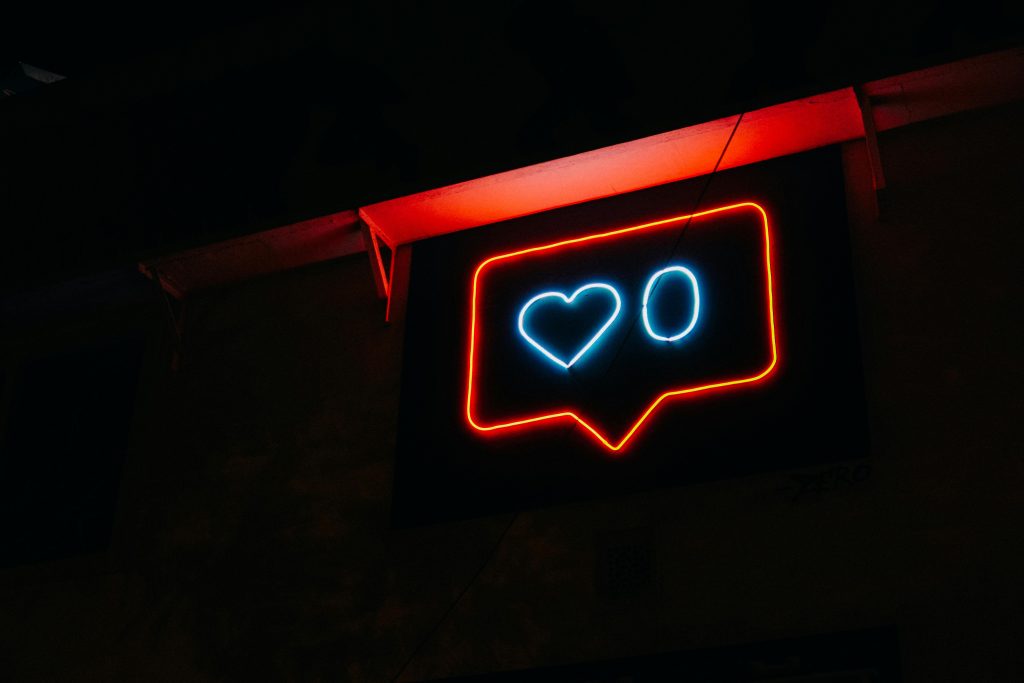
Brigitte: “A like does not really mean a like.
There was a Harvard article, I think it was in 2017, it’s already old in that case, in our social media time, how we measure time. But what is really behind a like? What is it? You don’t know what’s the motive behind. So it’s really hard to measure. So we should think about that as well.”
Megan: “Now I’m thinking about my own behavior and when I like something, what I’m usually saying is, you’re a person that I know and I support you in what you’re doing.
Here’s my little thumbs up, like here’s my little, I think you’re great. I guess that’s usually what I’m thinking when I’m liking on something.”
Brigitte: “Just reflect on your own behavior. That doesn’t mean others behave the same way.
You really need to get feedback, honest feedback, constructive feedback from others. So I think qualitatively asking, people one-on-one or through a questionnaire would be a great thing to do.”
More Metrics for Measuring Brand Success
Brigitte: “There’s other things like email subscriptions or newsletter subscriptions if you have an email list. What’s the opening rate, what’s the conversion rate via this link etc. This gives you an indication.
Also speaking engagements, you are invited to a show, a LinkedIn live, to a podcast, vice versa. So how many people approach you? I don’t know how many you get. I have a podcast guest with you.
Partnership opportunities, business referrals. I think what really counts is a conversion into sales at the end of the day.”
Megan: “You have no way of knowing this, but you have basically run down the list of how we attribute success and business outcomes to podcasting as well. So it’s really interesting how many parallels there are before that.
So now we all have our homework. We know what we’re going to go start tracking. Thank you for that.”
Brigitte: “One more thing. Never work with a single metric. That means you always have several measures coming from different perspectives, looking at one thing to make sense.
I think that’s the most critical advice.”
Brigitte’s Podcast Picks for Mastering Brand Authenticity
Megan: “So as we move on, got our homework, we’re going to, I’ve got one last question for you before I ask you to tell everyone where they can find you and learn more from you.
Do you have any examples off the top of your head of say either a personal or company brand bonus points, if it has a podcast associated that you think is just excellent and you think this was done so well and so beautifully and it’s doing such a good job, who should we go study to learn from?”
Brigitte: “OK, so there are three podcasts, so three favorite podcasts.”
The first one is Mel Robbins podcast because she is the testament of the power of authenticity and vulnerability and straightness, clarity, directness. She just captures people’s hearts.
I mean, not every episode is… sometimes it’s like this is really strong. But that’s how she is and she stays true to herself and that’s what I love about her.
Two more days, Chase Shady. He just stands out for his blend of wisdom, empathy and authenticity. He had a journey, he became a monk, then he was a consultant and now he’s running his own business. He’s an influencer and he shapes perspectives on life.
He is also someone who really touches people’s hearts and is very authentic and has very thoughtful interviews, thought-provoking discussions. He’s inspiring listeners.
I also like Louis House. He has this the School of Greatness and he also embodies this essence of authenticity and vulnerability. It’s about mindset.
He goes into all the facets of life from nutrition to health to wellness to having grace and grit to being unique. He also has lot of authors in his shows. You learn so much from all these different kinds of people.
It’s just beautiful to listen to this podcast. I do it on my run. I do it in the fitness center. I do it when I go for a walk and there’s always advice.
Interestingly, I listen to the right thing. What I’m starting to question in the morning is going to be answered in one way or another. It’s just a beautiful synchronicity.”
Connect with Brigitte
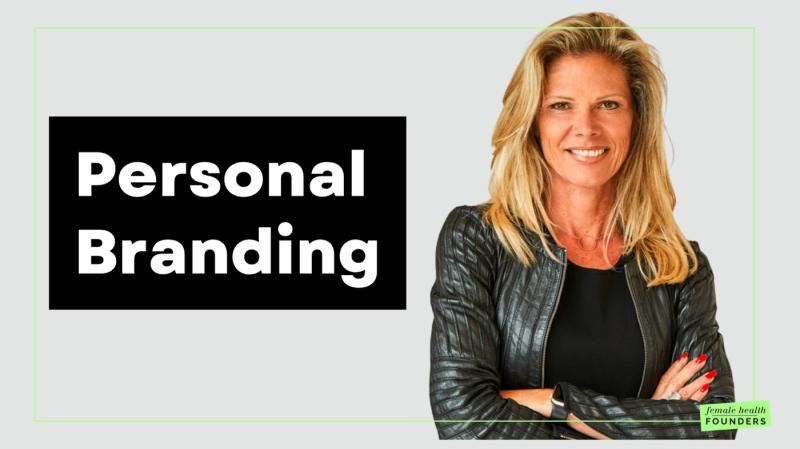
Brigitte: “I create brand identities, whether it’s personal brands, entrepreneur brands. I help elevate executive presence—that’s also where my heart is.
People can get in touch with me via my website. Via LinkedIn, I’m busy on LinkedIn. I also have an Instagram account.
I’m not really busy on Facebook. It’s not my channel. I just go there privately, but I have a page, but I’m not really engaging anymore because I feel my crowd is not there.
I also have a YouTube channel because I also have this podcast. So you can tune in. It’s about unravelling the secrets behind successful brands like you are.”
Final Thoughts
I love Brigitte’s focus on really dialing into the purpose of your podcast – how you are specifically serving your audience and your business when making decisions about what type of brand presentation to include.
I had the pleasure of joining Brigitte on her podcast, BrandsTalk, in an episode called Podcurious or Reluctant Brander? Navigating Podcasting’s Role in Elevating Brands and Business Growth.
Check out Brigitte’s work, subscribe to her podcast (where I’ve been privileged to also be a guest!), and take her Entrepreneurial Branding Starter Checklist – you’ll find the link in the show notes.
One of the many brand-associated elements of your podcast is, of course, your voice.
Now, a lot of us feel anxiety about our voices; how we speak and how it sounds to others, and so there is a lot of content out there about controlling it and using it the way you want to.
Something that isn’t considered quite as frequently, but that might be even more important is protecting your voice and your vocal health in general.
This is not something that I had ever really considered until I met Brienne Hennessy, who joined us for a Strategy and Networking call. The call was SO jam packed with incredible information, that we decided to release the episode here on the Company Show, too.
This was a talk filled with practical, detailed information about how you can protect your most powerful podcasting tool, your voice.
Here’s a quick preview:
I just love it. Treat your voice as respectfully and carefully as you would any other precious resource. So that is next week, make sure you’re subscribed to catch it!
Be A Guest on The Company Show
Do you have a podcast that’s making a major difference in your business or know one that is? Fill this contact form and let us know about it.
We’d love to have you here for a case study episode like this one!
Need A Podcast?
As always, this is Megan Dougherty, and The Company Show was made possible by the team at One Stone Creative.
If you know a business owner that you think should have a podcast, do us a favor and send them to podcastingforbusiness.com!
Key Quotes
“You need to align your podcast closely to your company or corporate brand so it becomes one channel element or vehicle to communicate your ideas.” – Brigitte Bojkowszky
Resources
One Stone Creative | LinkedIn | Twitter | Facebook | Instagram
Make sure to check out our free Monthly Strategy Calls!
Podcasting for Business Conference 2023 Recordings
Learn about what other business podcasters are doing:
Brigitte Bojkowszky Website | LinkedIn | Instagram | Facebook | YouTube

